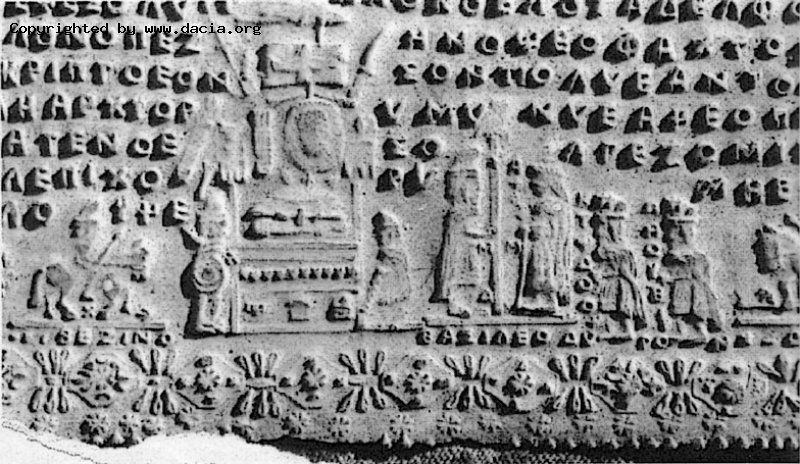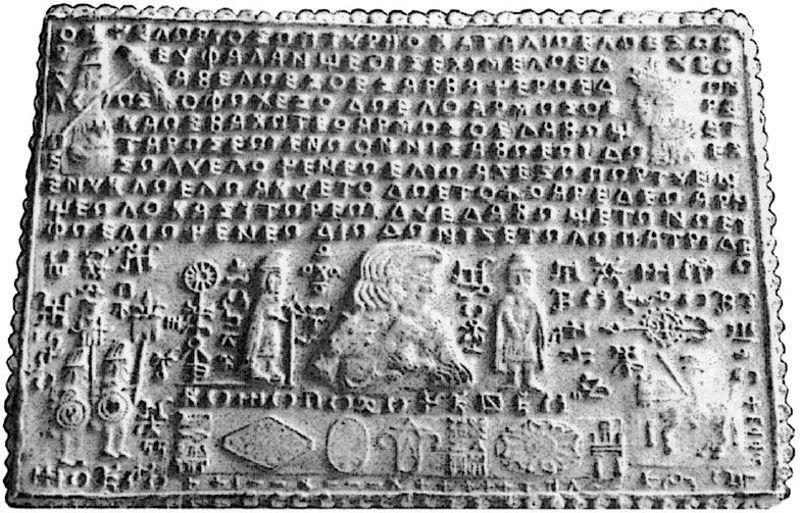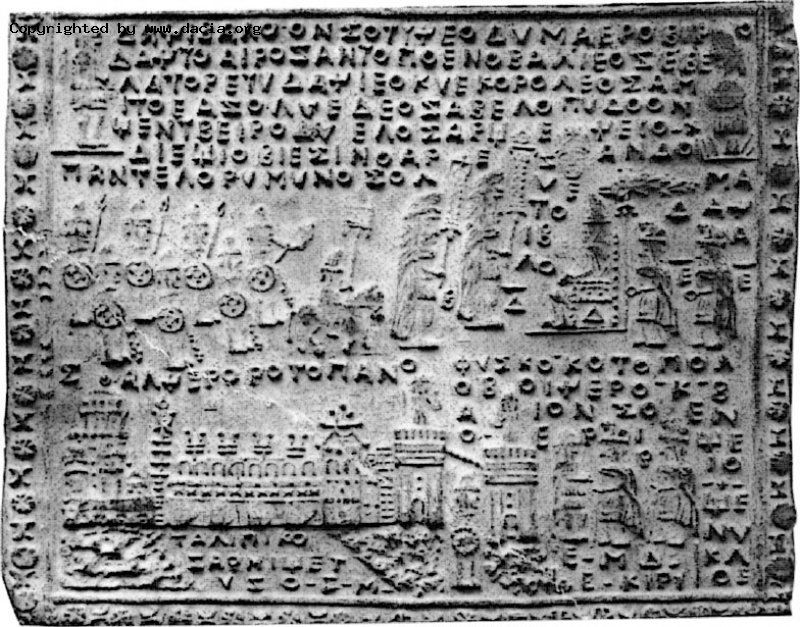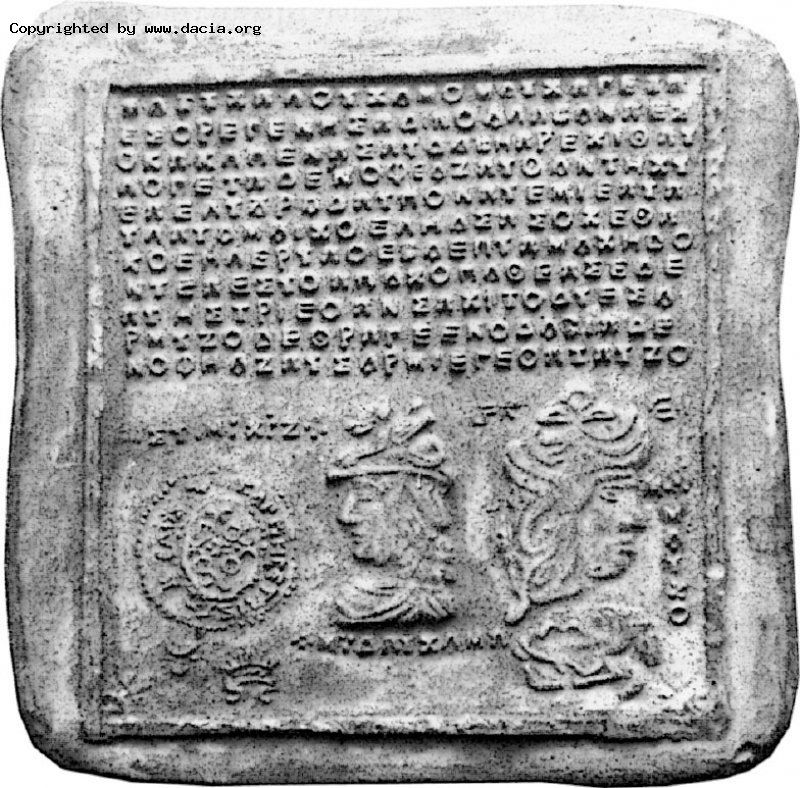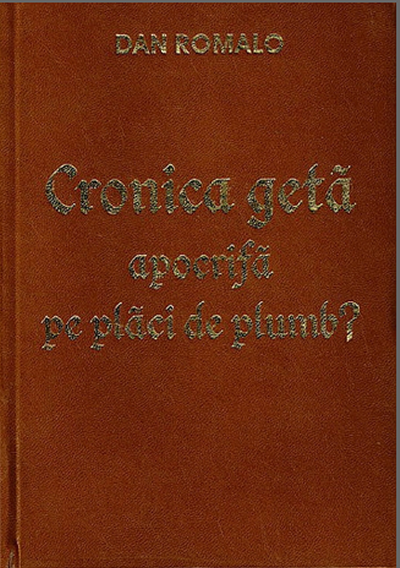|
|
||||
Lisa2012's Collection
|
||||
Editors Note: This article is
from Wikipedia and came with this disclaimer;
This article may contain original research. Please improve it by verifying the claims made and adding references. Statements consisting only of original research may be removed. More details may be available on the talk page. (January 2011)Hmmm... so no out of the box thinking allowed on Wikipedia. With that in mind this article is listed as most likely a forgery. The images following are from Dacia.org who seem to have the most complete collection in high resolution available on the web. So I have included a few of the most interesting for illustration but their website has a user friendly easy to view gallery: DACIA.ORG |
||||
|
..
Sinaia Lead Plates The Sinaia lead plates are a set of lead plates written in an unknown language or constructed language. They are alleged to be a chronicle of the Dacians, but have been widely regarded as modern forgeries. The plates were written in the Greek alphabet with a few other character additions, the connection with the Dacian civilization being quite obvious from the names of Dacian kings and placenames.
History The origin of the Sinaia lead plates is obscure. The first known mention of them was when the 200 lead plates were discovered in the warehouse of the Bucharest Museum of Antiquities in the 19th century. Of the 200 pieces originally in the collection of plates, only 35 are known to remain today, but there are some photos of some of the rest.[1] When discovered they were ignored and considered to be forgeries because they appeared new, with no traces of corrosion. They were not considered valuable enough to be evacuated with the rest of the Romanian Treasure to Russia in 1916. However, some renewed interest in the plates among non-scholars has been shown more than a century later, following the publication of a report about them by engineer Dan Romalo in 2003. According to "an oral tradition", the lead plates are in fact copies made at the Nail Factory of Sinaia in 1875 from the originals, which were allegedly made of gold, and they were kept for a while at the Sinaia Monastery.[1] Allegedly, the gold was used either in the building of Peleş Castle, or the plates were part of the Romanian Treasure which was never returned by Russia after World War I.[2] An analysis made at the Institute of Nuclear Physics in Bucharest confirmed that the composition of the plates is very similar to lead manufactured in the 19th century.[1]
Description Most of the plates are roughly rectangular, with the exception of one round plate. They have dimensions between 93mm x 98mm and 354mm x 255mm. Most are written using scriptio continua in the Greek alphabet, with a few additional signs; the text includes "V" from the Latin alphabet and signs for palatal "c" and "g" resembling those of the Cyrillic alphabet.[1] They also include text written in some unknown scripts that do not resemble any known written alphabet. In addition to the text, the plates also contain many complex illustrations, including those of armies, kings, cities, temples and buildings.
Language The language appears to have some Indo-European traits, but it has nothing in common with what linguists expect to be Dacian language, as no correlation with the Romanian language substrate can be found. Also, unlike any known Indo-European language, it appears to have almost no inflections, nor declinations. In addition, almost all nouns end in "-o", including names which had other endings in Latin and Greek, e.g. Boerobiseto, Dacibalo, Napoko and Sarmigetuzo.[1] There are some words borrowed from Greek (basileo from basileus, chiliarcho, from chiliarchos) and Latin, but some important words such as the alleged words for "king" (mato) and "priest" (kotopolo) do not appear to have any known Indo-European cognates.[1] Debate and author The archaeologists' consensus is that they are modern forgeries. According to the director of the Institute of Archaeology, Alexandru Vulpe, it is obvious they were made in 19th century and this was the opinion of both Vasile Pârvan and the archaeologists who studied them after him, the overall belief being that they were created by Bogdan Petriceicu Hasdeu, who is known to have made other forgeries as well.[3] According to Vulpe, the tablets include only what was known before 1900, for example, it uses the spelling "Comidava" for a Dacian town, although now it's known that the correct spelling is "Cumidava", as found in 1942 in an inscription[3] References:
|
||||
| Added as this is where I first found these...
Alexander Light: Currently, I am hoping to find a book written by a Romanian amateur historian named Dan Romalo who spent 30 years researching the plates. He is the reason why we have the scanned pictures of the plates. Many of the plates were stolen or “lost” and only because of his interest and courage we still have about 30 left today. Soon, all plates will probably be forever lost! |
||||
|
..
Available from Scribd: (Note may be a fee of uploading
a file in return)
|
||||
| FAIR USE NOTICE: This page contains copyrighted material the use of which has not been specifically authorized by the copyright owner. Pegasus Research Consortium distributes this material without profit to those who have expressed a prior interest in receiving the included information for research and educational purposes. We believe this constitutes a fair use of any such copyrighted material as provided for in 17 U.S.C § 107. If you wish to use copyrighted material from this site for purposes of your own that go beyond fair use, you must obtain permission from the copyright owner. | ||||
|
|

